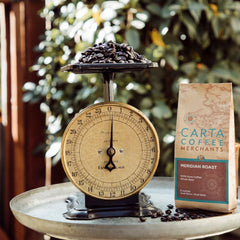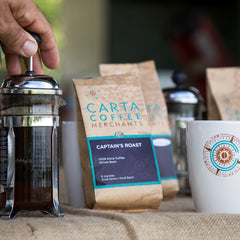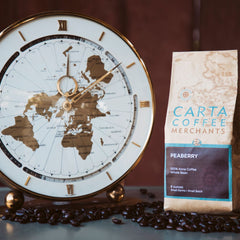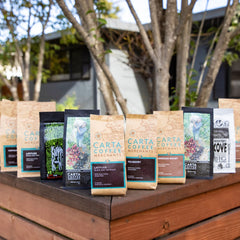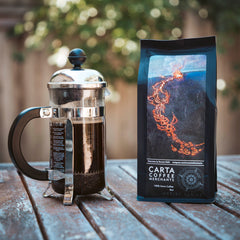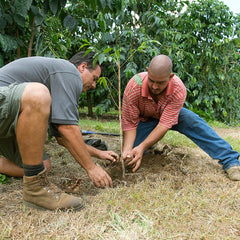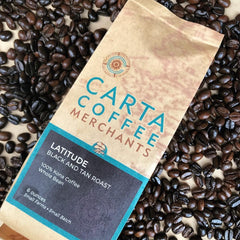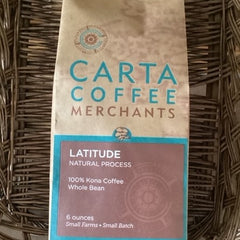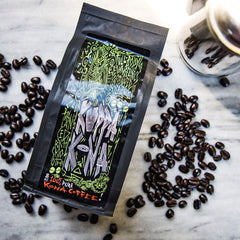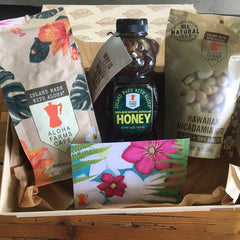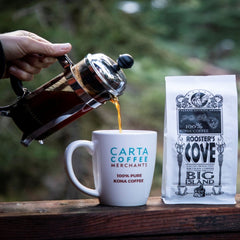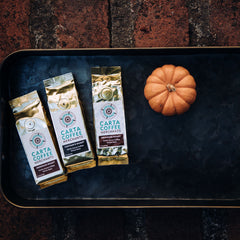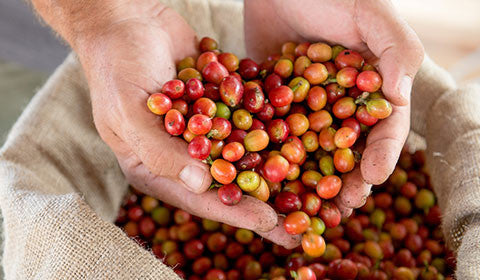Posted on

There’s nothing quite like a fresh cup of coffee. Whether it’s the first whiff of a pot brewing first thing in the morning, or a refreshing iced coffee promising an afternoon pick-me-up, there are countless ways for those delicious grounds to make every day a little bit better.
However, even our favorite things can get complicated. Dark? Light? Full City? French? When all you want is a quick caffeine buzz, do different coffee roasts even matter? What’s really the difference between light vs. dark roasts?
Learning even a little about different coffee roasts can go a long way, and keep you from holding up the line when the barista asks for your preference. Let’s go in-depth about the creation, naming, flavors, and more regarding coffee bean roasting. We’ll also discover which drinks go best with which roasts, and uncover a common coffee roasting myth.
The Basics
The National Coffee Association appropriately describes coffee roasting as “both an art and a science.” Expert roasters spend years learning the intricacies and techniques needed to reveal the delicate flavors, aromas and unique characteristics from each bean.
Once plucked from the tree, all coffee begins as a smooth, squishy green bean. They smell closer to a sweet pea than the aromatic flavorful brew they’re destined to become. From there, roasters will decide how deep to roast each batch of beans.
Though there are no official standards of naming for each coffee roast, generally they fall into four categories: light, medium, medium-dark and dark. The longer the coffee is roasted, the darker the color will turn and the more intense the flavor, and aroma will become.
Light Roast
Light roast coffee blends are composed of beans heated for the shortest amount of time, producing the lightest coloring. Their flavors tend to be milder with higher acidity, along with a notable sweetness. The beans are also denser than darker roasts, as much of the moisture is retained.
Common Names: Light City, Half City, Cinnamon, Blonde, New England
Internal Temperature Range: 180°C (356°F) and 205°C (401°F)
Perfect for: Drinking black, or with a splash of milk first thing in the morning
Medium Roast
Medium roast blends are commonly considered to be the most balanced in terms of flavor and aroma. Expect full, rich flavors without the intensity associated with darker roasts.
Medium roasts will also maintain many flavors from the original bean. As coffee beans get darker, they take on more flavors from the roasting process itself.
Common Names: Regular, American, City, Breakfast Blend
Internal Temperature Range: 210°C (410°F) and 220°C (428°F)
Perfect for: Iced coffee
Medium-Dark Roast
With a strong, rich taste that still makes for easy drinking, medium-dark roasts stand out from lighter roast due to the oils that begin to seep onto the bean’s surfaces. The brew itself will be noticeably darker than lighter coffees, with a bittersweet taste.
Common Names: Full City, After Dinner, Vienna
Internal Temperature Range: 210°C (410°F) and 220°C (428°F)
Perfect for: An afternoon energizer
Dark Roast
If you’re looking for a serious, full-bodied, smoky punch, dark roasts are where you want to be. Mostly commonly used for espresso grounds, these beans are shiny, and range in color from dark brown to jet-black. All origin flavors from the green bean have been roasted out.
Expect low acidity with aggressive, almost charred flavors
Common Names: French, Italian Espresso, Continental, Spanish
Internal Temperature Range: 240°C (464°F) and 250°C (482°F)
Perfect for: Cappuccino, Lattes, Americanos and other espresso drinks
Light vs. Dark: The Caffeine Myth
If you’ve had any discussions debating the merits of light vs. dark roasts, it’s likely the amount of caffeine contained in each roast has come up. Many assume that with its stronger flavor and deeper color, dark roasts must have higher levels of caffeine.
However, talk to the scientifically inclined and they’ll state the opposite. Since dark roasts are heated longer to achieve their deep flavors, the caffeine actually begins to burn off. It’s the lighter flavors that actually produce a stronger buzz.
So what’s the truth? According to the Huffington Post, they’re pretty much the same. Caffeine is an incredibly stable compound. Even during the intense heating process, anything lost is so minimal that it’s only detectible when using devices capable of measuring miniscule chemical levels. Even those sensitive to caffeine would never know the difference.
Rather than roasts, what actually makes a difference when it comes to caffeine are the types of beans themselves, specifically Arabica vs. Robusta. As you may predict from the name, Robusta contains considerably more caffeine than Arabica blends, averaging about twice as much of the buzzy compound. The taste is considerably harsher and bitterer, but if it’s the kick you’re after, Robusta may be the ticket.
So what’s the right roast for you? Really, it all comes down to preference. One coffee lover’s emergency espresso is another’s relaxing after dinner drink. Understanding the complexities of the coffee bean is simply the first step in discovering your perfect blend.
Have you decided on the perfect coffee roast? With everything from the light and bright to the dark and smoky, Carta Coffee’s exceptional small-batch 100% Kona coffee will exceed all expectations. Proudly and sustainably grown in Kona, Hawaii, Carta Coffee is proud to cultivate and roast only the best beans from one of the greatest coffee growing regions on Earth.


